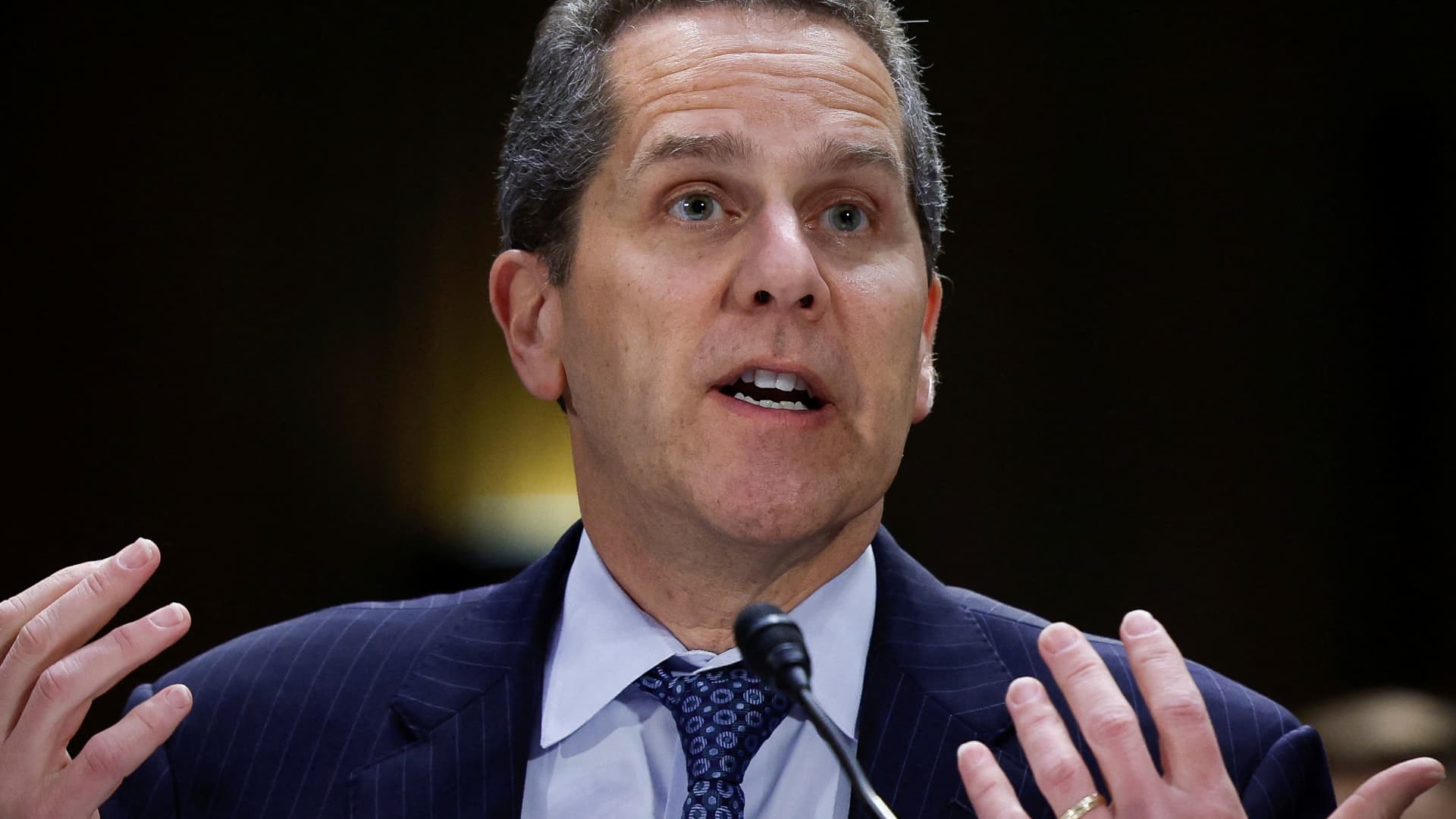Federal Reserve Board Vice Chair for Supervision Michael S. Barr testifies at a Senate Banking, Housing and Urban Affairs Committee hearing on “Recent Bank Failures and the Federal Regulatory Response” on Capitol Hill in Washington, March 28, 2023.
Evelyn Hockstein | Reuters
A top Federal Reserve official on Tuesday unveiled changes to a proposed set of U.S. banking regulations that roughly cuts in half the extra capital that the largest institutions will be forced to hold.
Introduced in July 2023, the regulatory overhaul known as the Basel Endgame would have boosted capital requirements for the world’s largest banks by roughly 19%.
Instead, officials at the Fed, the Office of the Comptroller of the Currency and the Federal Deposit Insurance Corp. have agreed to resubmit the massive proposal with a more modest 9% increase to big bank capital, according to prepared remarks from Fed Vice Chair for Supervision Michael Barr.
“This process has led us to conclude that broad and material changes to the proposals are warranted,” Barr said in the remarks. “There are benefits and costs to increasing capital requirements. The changes we intend to make will bring these two important objectives into better balance.”
The original proposal, a long-in-the-works response to the 2008 global financial crisis, sought to boost safety and tighten oversight of risky activities including lending and trading. But by raising the capital that banks are required to hold as a cushion against losses, the plan could’ve also made loans more expensive or harder to obtain, pushing more activity to non-bank providers, according to trade organizations.
The earlier version brought howls of protest from industry executives including JPMorgan Chase CEO Jamie Dimon, who helped lead the industry’s efforts to push back against the demands. Now, it looks like those efforts have paid off.
But big banks aren’t the only ones to benefit. Regional banks with between $100 billion and $250 billion in assets are excluded from the latest proposal, except for a requirement they recognize unrealized gains and losses on securities in their regulatory capital. That would likely boost capital requirements by 3% to 4% over time, Barr said.
That appears to be a response to the bank failures last year of midsized banks caused by deposit runs tied to fear over unrealized losses on bonds and loans.
This story is developing. Please check back for updates.

